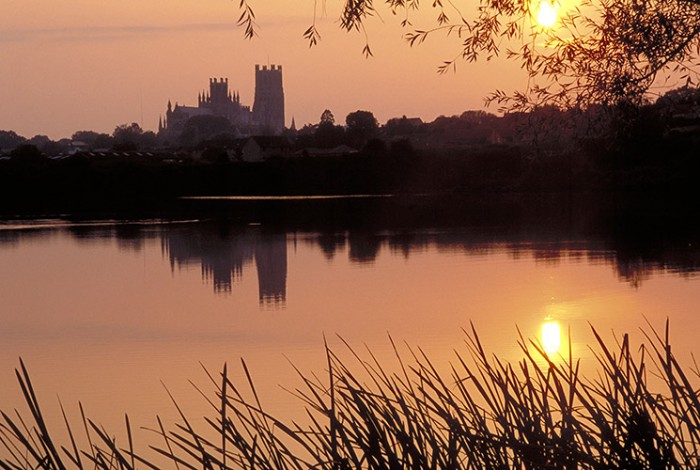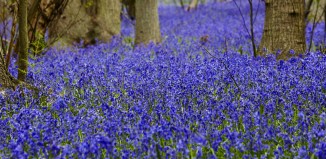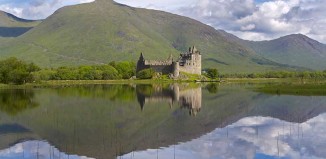Great British cathedrals
Britain is home to many stunning cathedrals, from the world-famous Canterbury to the home of the Lincoln imp, here are a few others that should be on your list
St Magnus Cathedral
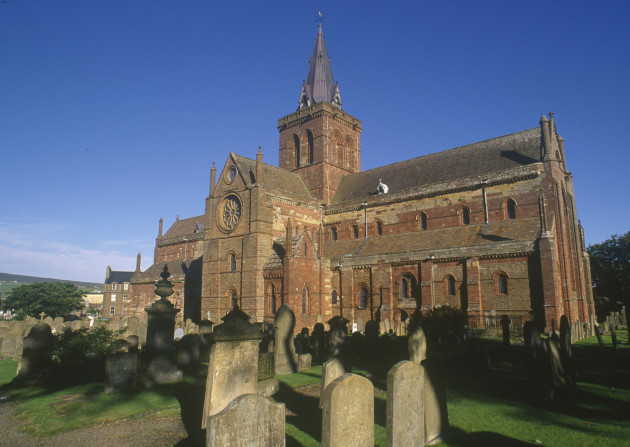
Britain’s most northerly cathedral, St Magnus in Orkney was founded by the Viking Earl Rognvald in honour of his uncle, Earl Magnus Erlendsson. Known as the “Light in the North” the cathedral is one of the Orkney Islands’ most famous landmarks and towers over the Kirkwall landscape. Construction on the striking sandstone building began in 1137 with numerous additions made over the next three centuries. Part of the appeal of St Magnus is the effect of the weathered bicolour stonework created by the red sandstone, quarried from Head of Holland, north of Kirkwall, and yellow sandstone, which is believed to have been quarried on Eday, one of Orkney’s northern isles. Visitors can admire the impressive Norman architecture on guided tours of the upper areas of the cathedral, which include its tower and the breathtaking views it offers, while the magnificent interior homes memorials to well-known Orcadians, as well as a beautiful stained glass window commissioned for the cathedral’s 850th anniversary.
Ely Cathedral
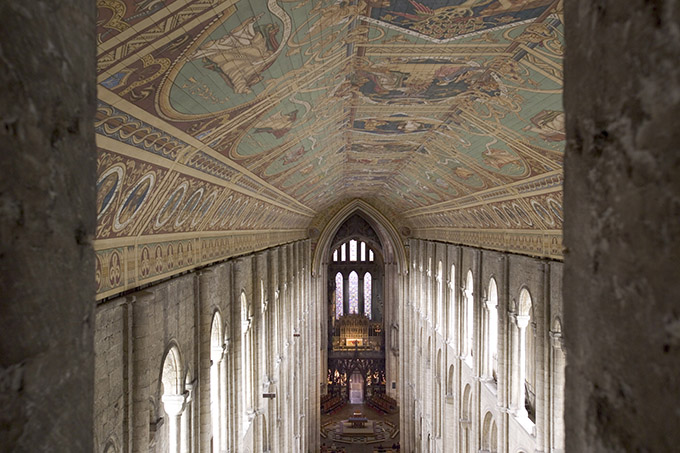
Towering above the flat landscape around it, Ely Cathedral has been dubbed the “Ship of the Fens”. The beautiful building began with one remarkable woman: Etheldreda was one of the four daughters of Anna (or Onna), king of East Anglia, all of whom, strangely enough, founded abbeys and went on to be canonised. After vowing to remain a virgin, Etheldreda left her second husband, who was determined to consummate their marriage, and became a nun, founding a double monastery at Ely in AD 673 on the site of what is now Ely Cathedral.
Etheldreda’s monastery flourished for 200 years until it was destroyed by the Danes in the 870s. It was refounded as a Benedictine community in 970 and after its restoration by Ethelwold it became one of the richest abbeys in England, second only to Glastonbury. The present building dates back to 1083, and cathedral status was granted it in 1109. For centuries, Etheldreda’s shrine was the focus for vast numbers of medieval pilgrims, but it was destroyed during the English Reformation in 1541, though a slate in the cathedral marks the spot where it stood. Ely is a remarkable combination of monumental Romanesque architecture with spectacular Gothic additions. The jewel in the crown is what is known as the Octagon: a lantern ceiling that was created in the 1320s in the wake of the collapse of the Norman tower.
Coventry Cathedral
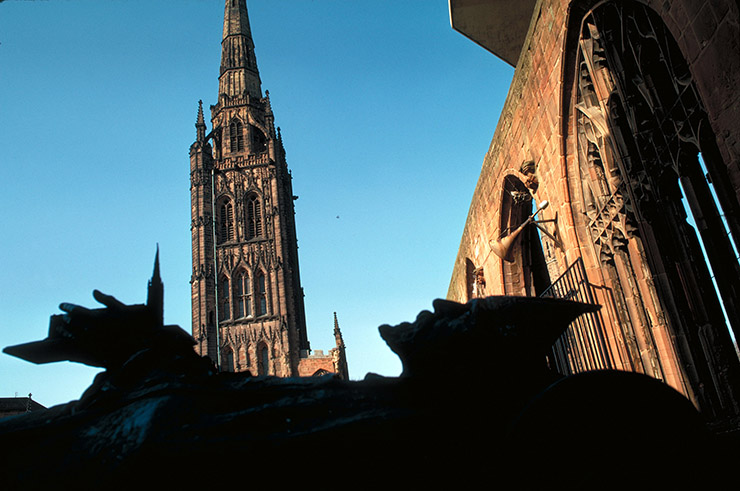
The story of Coventry Cathedral is one of rebirth. The Warwickshire city has, in fact, had three cathedrals in the past 1,000 years: the 12th century priory church of St Mary, the medieval parish church Cathedral of St Michael, built around 1300, and the modern Coventry Cathedral, which rose phoenix-like from the ashes of its bombed predecessor. The high concentration of armaments, munitions, aircraft and aero-engine plants in Coventry made it a target for the German Luftwaffe during the Second World War. On the night of 14 November 1940, Coventry was devastated by bombs and the cathedral suffered with the city.
The decision to rebuild was taken the morning after its destruction and in 1951 Sir Basil Spence was chosen from over 200 architects who had entered a competition to design the new cathedral. Spence was the only entrant who chose to keep the ruins of the old cathedral intact, linking them to the new cathedral with a high porch. Building began in 1955 and Spence commissioned work from Graham Sutherland, John Piper, Ralph Beyer, John Hutton, Jacob Epstein, Elisabeth Frink and others on the project. In the “old cathedral” it is still possible to see at eye level sections of hand-painted glass by John Thornton, a master glass painter of his time who went on to paint the windows of York Minster. By the time the new cathedral was consecrated in 1962 it had become an international symbol of regeneration and reconciliation.
Westminster Abbey
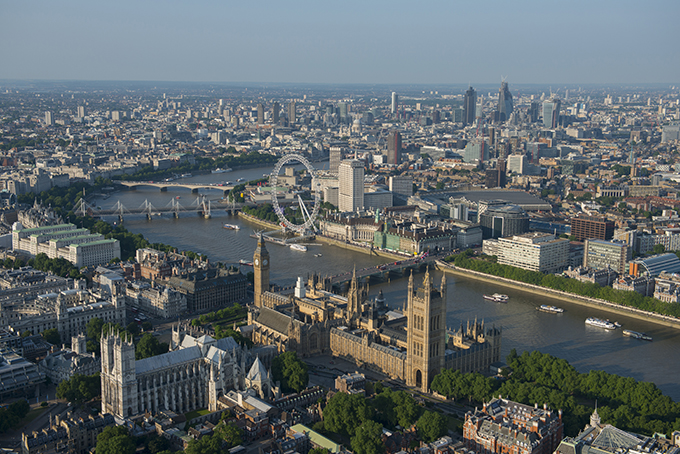
Deemed a cathedral between 1540 and 1556, Westminster’s Abbey’s status in fact changed after 1560 to “Royal Peculiar” – which is to say, a church responsible to the sovereign of state. Construction of the building began in 1245 on the orders of King Henry III, although monks first came to the site in the 10th century. Every coronation since has taken place under its Gothic roof, as well as 16 royal weddings. The mortal remains of many monarchs reside here, including those of Henry III, Elizabeth I and Charles II. Others who rest in peace at the Abbey include Sir Isaac Newton, Charles Dickens and the Unknown Warrior, whose remains were brought here on Armistice Day, 1920. The moving inscription concludes: “They buried him among the kings because he had done good toward God and toward his house.”
Gloucester Cathedral
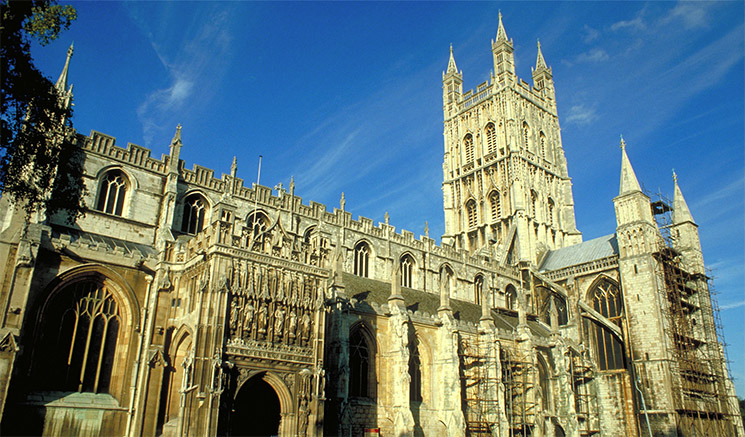
Fans of Harry Potter might recognise Gloucester Cathedral’s exquisite cloisters, which have appeared in the three of the blockbuster films. Completed in 1367, the cloisters are famous for their magnificent fan vaulting, which is believed to be the earliest example in England. Nor is this Gloucester Cathedral’s only claim to fame. In 1216, Henry III, who came to the throne at just nine, was crowned at Gloucester, while in 1327 King Edward II who had died in Berkeley Castle in particularly grisly circumstances was buried there. A shrine-like monument was erected over the tomb of the dead king and the public flocked to visit it. This and royal patronage led to funds flowing into the abbey, which enabled the magnificent remodelling of the east end to be carried out in the very latest “Perpendicular” style.

